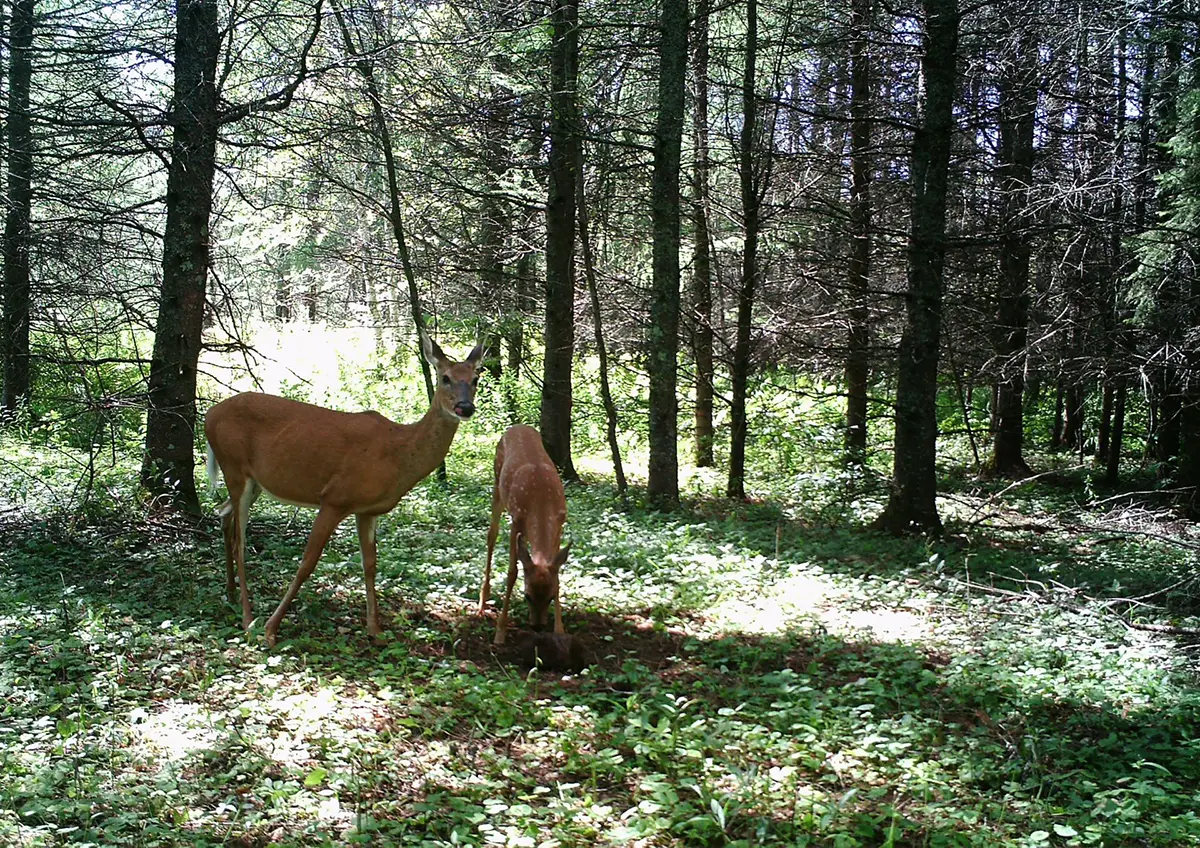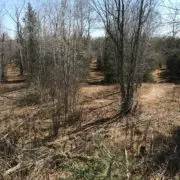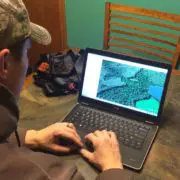How Staying Warm in a Tree Stand Equals Big Buck Success
Make Plans to Stay Comfortable in Your Tree Stand
You’ve been sitting in the tree stand watching your shooting lanes for what seems like hours. Your back aches, your legs need a stretch, and you can’t feel your rear end except for the millions of pin pricks starting to work their way up your body. You stand up for a while to get some blood flowing again in the cold Midwestern firearm season weather. But after you sit down again, the shivering starts. Your body starts uncontrollably shaking, but unfortunately not because of buck fever. You can feel the warmth and life in your body draining out through the cold metal seat beneath you. It must be lunchtime (aka, an excuse to get down from the tree stand) by now, right? Thinking you can’t last much longer with your numb hands and vibrating body, you check your watch and flinch in disbelief. It’s only 9:30 in the morning!
If you’ve been deer hunting long enough, you’ve probably been in this situation at least a couple times. The sheer mental boredom and physical strain of sitting absolutely still for hours takes its toll, especially when you’re uncomfortable. If you’re warm and have a comfy seat on top of one of your best tree stands, though, the time can fly by faster than you realize. And when you’re trying to put a mature buck in the back of your truck, you sometimes need to spend a lot of time in tree stands.
Why You Should Stay Put in Your Tree Stand
Think about it this way: the more you enter and leave your tree stands, the more you expose yourself to a deer’s senses. You make more noise by walking over the crunchy leaves and breaking branches, you leave a scent trail that’s difficult to fully hide, and your moving silhouette is a surefire warning to any animal watching. But when you’re in a tree, you’re quiet, scent-free, and camouflaged by your tree stand blind – fully hidden from sound, smell, and sight. This is reason enough to not leave for a midday warm-up.

All-Day Locations for Tree Stands
There are just some hunting situations and locations where you need to spend all day in a ladder stand or climbing stand. There’s no getting down for lunch to go warm up at the shack or the truck in these situations. It’s just you and the cold all day, so you need to be prepared. Here are a few locations or circumstances where your hunting stands and blinds might need to adopt the waiting game.
While hunting bedding areas is tricky business and has a high risk of educating deer, it’s also a great way to get close to a mature buck. For that reason, many hunters roll the dice occasionally for the opportunity to bag a buck in his bedroom. But since deer return to bedding areas in the early morning hours and will generally stay until almost nightfall, you have to be very dedicated to make this kind of tree stand location work. You’ll need to be settled into your stand at least 45 minutes before sunrise in most cases, more if you’re located close to a feeding area. You need to be quiet and fairly still from then until the sun goes down again. You could very likely see deer return in the morning hours, and they may even bed in front of you. In that case especially, being uncomfortable could kill your chances at staying still long enough to see a mature buck.
Similarly, maybe you’ll be hunting a popular public land area or you hunt a small private property surrounded by neighbors with an aggressive hunting approach. In these highly pressured systems, deer are going to be very skittish and extremely discerning about every little noise, movement, or scent they encounter. When a pressured deer catches you shifting around in or getting out of your tree stands, they will quickly drop a mental waypoint and avoid that area for a while. It may not be long-term, but it could be long enough to foul up your chance of seeing them again while you’re hunting.
Additionally, when you’re surrounded by other hunters, you can use that fact to your advantage. If you’re uncomfortable and cold, it’s likely that they are too. So if you can tough it out, they’ll likely get down from their stands and unknowingly chase deer right into your lap. One thing is for certain: you can’t kill a buck if you’re not there when he walks by your stand.
On the practical side, some stand locations may just be too remote to feasibly leave and warm up anyway. For example, let’s say you found a promising funnel location tucked way back in the forest using aerial scouting methods. If you have to hike back into the woods over a mile, you probably won’t want to get down in the middle of the day to return to the vehicle. In these cases, it’s better to pack a lunch and stay put all day. We’ll discuss more on the food side down below, since that is a critical piece of staying comfortable.
Staying Comfortable in a Tree Stand
As the popular saying goes, there is no bad weather, just bad clothes and preparation. You should be able to plan for almost any conditions while in the field so that you can stay comfortable all day long. It all starts with your deer hunting tree stands. The best deer hunting tree stands should offer enough room so that you don’t feel cramped. If you feel crunched for space with no room for your hunting backpack, you’re going to feel claustrophobic within a few hours, and your legs are far more likely to fall asleep. When you don’t feel like a stand is big enough, consider buying tree stands for big men, such as two person tree stand. Obviously the most comfortable options are fully concealed box hunting blinds, where you can seal out the weather conditions and hide your presence much better. Simply lounge back on your stadium chair, and you’ll be set for a day of hunting. This amazing tree stand accessory has multiple adjustments and folds down into an easily carried bundle.
Ideally, you should also have a few other critical tree stand accessories. No matter what kind of tree stands you’re in, you need to have a comfortable hunting seat to insulate your body from the cold and feel good to sit on. A portable hot seat is a great option to take with on any hunt since it is lightweight and does a great job at keeping your rear end cushioned throughout the long day. Another common issue with sitting in the woods all day is not having enough lower back support, which can quickly convince you to abandon your hunt before it’s time. The Big Game Tree Stands spring-back lumbar support provides just the right cushion where you need it, so you can stay upright and pain-free.
Clothing is one of the most important tree stand accessories around. If you don’t have the right clothing, you will be miserable and won’t last long, guaranteed. It doesn’t matter if you expect hot or cold conditions; wear a base layer of merino wool or synthetic moisture-wicking material, which will keep your skin as dry as possible. Wet cotton clothing next to the skin is a recipe for hypothermia in the cold. Also, wear several insulating layers so you can adjust it throughout the day. On the morning walk into your stand, wear only your base layers so you don’t get hot and sweaty. As your body cools, add more layers gradually. If the sun comes out and the weather improves, you can always remove a layer again. The key is to stay dry by not letting your body overheat.
Cold feet and hands are two of the most common reasons we might want to give up on a particularly chilly day. Avoid them by bringing high quality, insulated boots and gloves. For those situations where you need to have your hands available quickly, you can slip a hand/foot warmer into a hand muff and keep your fingers toasty without your gloves.
Finally, you need to have good nutrition if you’re going to sit in the woods all day. Pack a bigger lunch and more snacks than you think you might need, focusing on high protein and high fat foods. Protein and fat fire up our metabolisms and provide a steady energy dose. Carbohydrates like candy or donuts give us a quick sugar rush, but the resulting sugar slump is not worth the short term gain. Instead, bring a whole grain sandwich of your choice, nuts, cheese, jerky, sausage, and a few pieces of fruit. Whenever you start to feel tired, cold, or even mentally bored, eat a small snack. Also, make sure to drink your usual amount of water and bring along a hot beverage in a thermos to lift your spirits when you’re getting too cold.
Being comfortable in the woods isn’t like lounging on a couch. You don’t want to get so comfortable that you fall asleep and have to test out the strength of your tree stand harness. But comfort does mean being able to sit still long enough to see a buck you could shoot. Maybe that takes an hour, or maybe it doesn’t happen after a season of all-day sits. The point is that you can’t put venison in the freezer unless you put in the time to hunt. Setting your tree stands up for success means you have a far better chance than those that don’t take these steps.







